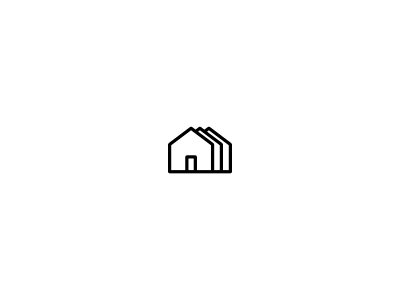Thinking about building your own home? Kit homes make it easy and more affordable. You get all the parts shipped to you, ready to put together. In this guide, you'll learn what kit homes are, how much they cost, and what to expect if you decide to build one.

What Is a Kit Home?
What is a kit home? It's a house you build using pre-cut parts. The company sends you the walls, roof, and floors. You just follow the plan and build it. It's not the same as a modular home. Modular homes come in big chunks that are built in a factory. Kit homes come in parts. You build the whole thing on your land.
Kit homes are also not like regular homes. With a regular home, a builder gets materials and builds from scratch. With a kit, most of the work is done before it gets to you. Some kits even include detailed instructions and labeled parts to make the process easier for beginners. This makes kit homes great for people who want to save money or build something themselves.
Kit homes have been around for over 100 years. Sears sold kit homes back in the 1900s. Back then, people would order a home from a catalog. It would arrive by train. They’d build it using the included plans. Today’s kits are more modern, but the idea is the same.
Benefits of House Kits
1. Affordability
Cheap kit homes are cheaper than regular houses. You save on labor and waste. Most people pay less to build a kit home. You also avoid high contractor fees. For many, it’s a way to become a homeowner without a huge loan. You don’t always need a huge down payment either.
2. Faster Construction
You can build a house kit in weeks, not months. Most parts come ready to use. Some kits go up in as little as two to three weeks with a small crew. That’s helpful if you’re on a tight deadline or want to avoid long build times. Speed can also mean lower labor costs.
3. Customization Options
Many kits let you pick your layout, finishes, and extras. You still get choices. Some kits even offer upgrades like fireplaces, bay windows, and lofts. You may be able to change the roof type or add more storage. Some companies offer eco-friendly upgrades too.
4. Energy Efficiency
Some kits use smart designs to save energy. Good windows, strong walls, and tight seals help keep costs low. Some also come with insulation already built into the panels, lowering heating and cooling bills. Over time, you can save a lot.
5. Minimal Waste
Because the parts are cut in a factory, there's less waste. You only get what you need. That also means fewer trips to the hardware store and less trash on your job site. Less waste also means you’re being more eco-friendly.
Read also: How Shipping Container Homes Are Revolutionizing Modern Living
Cons of House Kits
1. Requires Labor
Even with a kit, you'll need skilled workers or good DIY skills. Some tasks need pros.
2. Not Fully Custom
You can't always get every detail you want. You’re working with a set design.
3. Zoning and Permits
Some places have rules that make kit homes hard to build. Always check your local laws.
4. May Exclude Finishes
Many kits don't include plumbing, floors, or electric work. You’ll need extra time and money.
5. Financing Can Be Tricky
Some lenders are unsure how to handle loans for kit homes. You may need to shop around.
House Kits Prices: What to Expect
Small Kits
House kits with prices between $20,000 and $50,000 are considered small. These may include one or two bedrooms. They're great for tiny homes or guest houses. Some come as simple cabins or small cottages, perfect for vacation spots or rental properties. They’re easy to maintain and great for one or two people.
Mid-sized Kits
These cost $50,000 to $100,000. They often have two to three bedrooms. Some come with porches or garages. These are good for small families or couples who want room to grow. These homes feel more like traditional houses and may include open floor plans.
Large or Luxury Kits
Large kits start at $100,000. Some go over $200,000. These can include custom floors, big kitchens, and many rooms. Think walk-in closets, large bathrooms, and high-end finishes. These homes rival traditional builds in look and feel. You get space, comfort, and style.
Factors Influencing Kit House Prices
There are many factors influencing kit house prices like land, materials, brand, design etc. Let'e dive into some of the factors:
Size and Layout
The bigger the house, the more it costs. More rooms mean more materials and time. A two-story home will usually cost more than a one-story home of the same size.
Material Quality
Higher-end kits use better wood, stronger walls, and longer-lasting parts. That raises the price. Roof type, siding, and window quality can all make a difference. Cheaper kits might use lower-quality wood or plastic windows. Higher-end kits may use cedar, stone, or energy-efficient glass.
Additional Features
Add-ons like solar panels, decks, or high-end floors will cost more. So will extras like skylights, wood-burning stoves, or finished basements. Custom lighting, tile showers, and upgraded counters can also raise the price.
Delivery and Shipping Costs
Kits are large and heavy. If you live far from the factory, shipping may cost more. Remote areas or difficult access can also raise this cost. Some companies offer free shipping within a certain range, so ask ahead of time.
How to Build a House Kit?
Step 1: Choose the Right House Kit
Pick a kit that fits your land, your needs, and your budget. Make sure it's the right one to build a house kit the way you want. Read the fine print to know what’s included. Compare several kits before making a choice.
Step 2: Site Preparation
Clear the land, level the ground, and pour the foundation. This step may take time, especially if the land is uneven or rocky. You may also need permits and inspections before digging.
Step 3: Assemble the Structure
Follow the plans. Put up walls, the roof, and install doors and windows. Some people hire a crew, others do it themselves with help from friends or family. Make sure your tools are ready before you start.
Step 4: Interior Finishing
Add floors, paint, cabinets, and plumbing. Finish what the kit doesn't include. You may need pros for wiring, plumbing, or heating systems. This part may take a few weeks, depending on how much work is left.
Step 5: Final Inspections & Move-In
Get the house checked by your local inspector. Once it's approved, you're ready to move in. Don’t skip this step it ensures your home is safe and up to code. After that, enjoy your new home!
Conclusion
Kit houses prices vary, but they're a smart option for many people. They cost less, go up fast, and waste less. They're not perfect, but they make home ownership easier for some. If you want to build a house kit on a budget, it's worth a look. Look at house kits with prices that match your needs. Compare features, check what’s included, and plan your build carefully.


